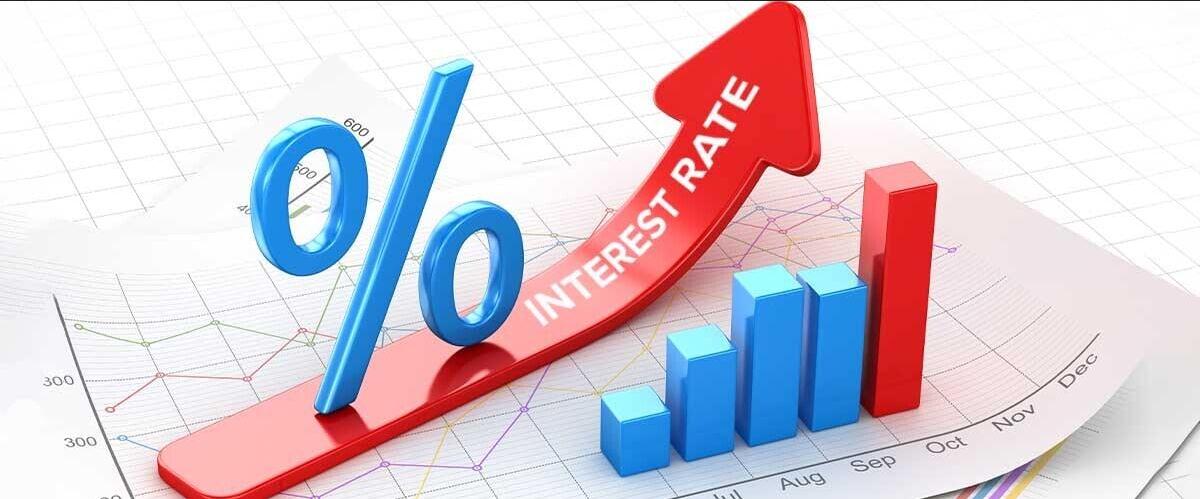The interest rate is the amount, expressed as a percentage of principal, charged by a lender to a borrower (borrower) for the use of property or capital. Interest rates are typically expressed in annual percentages, commonly known as the annual interest rate. Borrowed assets can include capital, consumer goods, and a large sum of assets such as vehicles or real estate.
Understanding the concept
Interest is essentially an income or loan charge to the debtor for the use of an asset. In the case of a high-value asset, such as a car or a building, the interest rate is sometimes known as the lease rate. When the borrower is known for his reliability in returning money or property, he generally has to pay a low interest rate; If the borrower is considered high risk, he will have to pay a higher interest rate.
In terms of borrowed money, the interest rate is typically applied to the principal, which is the amount of money borrowed. The interest rate is the cost of debt to the borrower and the rate of return to the lender.
Interest rates are applied in numerous situations, where loan and debt are essential concerns. Individuals borrow money to buy houses, to finance projects, pay the costs of their education, etc. Businesses, for their part, take loans to finance projects and expand their operations by purchasing fixed and long-term assets such as land, buildings, machinery, trucks, etc.
The money that is borrowed has to be repaid either in full at a certain fixed time or in monthly installments, which is generally the case. The money that has to be repaid is generally more than what has been lent since lenders want to be compensated for the loss of use of the money during the time it is not in their possession; The lender could have invested the funds instead of lending them.
When lending a large asset, home or capital, the lender may be able to generate income from lending it before using it directly. The difference between the total that is paid to the lender and the amount that was originally lent by the lender is the interest that is charged. The interest charged is an interest rate that is applied to the principal.
For example, if a person borrows $300,000 on a mortgage from a bank and the loan agreement stipulates that the interest rate on the loan is 15%, this means that the borrower will have to pay the bank the original sum of $300,000 + (15% of 300,000) which is equal to usd 300,000 + usd 45,000 = usd 345,000.
In another example, if a company secures a loan of USD 1.5 million from a financial institution that charges 12% interest, the company must pay the financial institution the principal principal (the USD 1.5 million) + the interest that is (the 12% of usd 1.5 million) which is equivalent to usd 1.5 million + usd 180,000 = usd 1.68 million.
Factors that affect the interest rate
The interest rate charged by banks is determined by a number of factors such as the state of the economy. A central bank of a country sets the interest rate. When the central bank sets the interest rate high, the cost of debt increases. When the cost of debt is high, this discourages individuals and businesses from borrowing and slows demand. Interest rates also tend to rise when there is inflation.
To combat inflation, banks can establish higher reserves in their funds, which means that money does not flow in the same amount to the public, or that there is a higher demand for credit with higher interest rates.
In an economy with high interest rates, people turn to saving their money as this ensures that they receive more interest on their savings. The stock market suffers as investors can take advantage of having their money in savings accounts, receiving higher returns than they receive by investing in a company. In these cases, businesses also suffer due to limited access to capital to finance themselves through debt, which leads to an economic contraction.
Economies are often stimulated during periods of low interest rates because borrowers have access to loans at very low rates. Since interest rates on savings are low, businesses and individuals are more willing to spend and make riskier investments such as buying vehicles or stocks. This spending stimulates the economy and provides an injection of capital to the markets leading to economic expansion. While governments prefer low interest rates, these can eventually lead to an imbalance where demand exceeds supply causing inflation. When inflation hits, interest rates rise.
Central banks are known as the lenders of lenders or the lender of last resort and are the institutions in charge of setting the base interest rate at which they lend money to commercial banks and investment banks. These interest rates will depend on the state of the economy of the country where the Central Bank is based, whether it is contracting or experiencing an expansion.
The simple interest rate
The examples presented are calculated based on an annual simple interest rate, which is:
Simple interest = Principal capital x Interest rate x loan duration.
The person taking out a mortgage loan will have to pay USD 45,000 in interest at the end of the year, assuming that the term of the agreement was for only one year.
If the term of the loan were for twenty years, the interest to be paid would be:
Simple interest = usd 300,000 x 15% x 20 = usd 900,000
An annual interest rate of 15% translates into an annual interest of USD 45,000. This means that after 20 years, the borrower would have had to make USD 45,000 x 20 years = USD 900,000 in interest-only payments. Now you can get an idea of how banks make their money.
The compound interest rate
But banks almost never charge a simple interest rate. They prefer the compound interest method, with which they take much more interest from the borrower. Compound interest, also called interest on interest, is an interest rate that is not only applied to the principal, but to the accumulated interest from previous periods. The bank assumes that at the end of the first year, the borrower owes the principal plus interest for that year. The bank also assumes that at the end of the second year, the borrower owes the principal plus the first year’s interest, plus interest on the first year’s interest.
The interest owed when compound interest is applied is higher than that obtained by the simple interest method, because the interest charged monthly on the principal includes the interest accumulated from the previous months. For short times, the calculation will be similar in both methods. However, as time increases, the disparity between the two interest rates grows.
A simple method to calculate compound interest is to use the following formula:
Compound interest = Principal x [(1 + interest rate)ⁿ – 1]
Where n is the number of compound periods.
When someone saves money using a savings account, compound interest is favorable. The interest earned on these accounts is compounded and is compensation to the depositary for allowing the bank to use the deposited funds. If a business deposits $500,000 in a high-yield savings account, the bank can use $300,000 of these funds as a mortgage loan.
To compensate the business, the bank deposits 6% interest into the account annually. So while the bank takes 15% from the borrower, it is giving 6% to the custodian, in this case the business, making a 9% profit. In effect, savers lend money to the bank, which in return, provides funds to end borrowers expecting a return in interest.
The cost of debt to the borrower
While interest rates represent the lender’s interest income, they constitute a cost of debt for the borrower. Companies always weigh the cost of borrowing versus the cost of issuing equity, such as dividend payments, to determine which source of financing will be less expensive. Since most companies are financed by taking on debt or issuing equity, the cost of capital must be evaluated to achieve an optimal capital structure.











